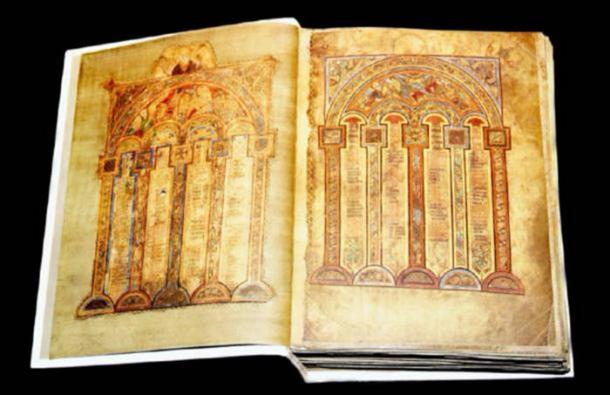Science
Scottish Research Rewrites History of the Book of Kells

New research has upended long-held beliefs about the origins of the Book of Kells, one of the world’s most renowned illuminated manuscripts. According to a forthcoming study by Dr. Victoria Whitworth, the exquisite 1,200-year-old Gospel book was not created on the Scottish island of Iona, as traditionally believed, but rather at the monastery of Portmahomack in Easter Ross, located in the Pictish region of eastern Scotland. This revelation could transform our understanding of medieval Scottish culture and manuscript production.
For centuries, scholarship has suggested that the Book of Kells originated at the Iona monastery before being moved to the monastery of Kells in County Meath, Ireland, following Viking raids in the 9th century. The manuscript, which contains elaborate illustrations of the four Gospels—Matthew, Mark, Luke, and John—has long been considered a cultural treasure of Ireland.
Dr. Whitworth’s research draws on a combination of art historical analysis and archaeological evidence, challenging the narrative that has persisted since the manuscript’s discovery. This new perspective invites scholars to reconsider the influence of Pictish art and culture on the production of significant religious texts during the early medieval period.
The implications of this finding extend beyond the manuscript itself. Recognizing Portmahomack as a center of significant cultural activity highlights the interconnectedness of early Scottish and Irish histories. The Picts, often overshadowed in discussions of medieval Britain, emerge as pivotal figures in the creation of some of the most important works of art from this era.
As the debate surrounding the Book of Kells continues, this research underscores the need for a broader view of medieval manuscript production. Understanding the diverse locations and cultures that contributed to these works enriches our historical narrative and acknowledges the complexity of cultural exchange in early Scotland.
In light of Dr. Whitworth’s findings, the Book of Kells may require a reevaluation of its significance not only as an Irish artifact but as a testament to the shared heritage of the British Isles. Further studies are anticipated to delve deeper into the origins of this masterpiece, potentially unearthing more about the artistic practices and exchanges that defined its creation.
As scholars and enthusiasts alike await the official publication of Dr. Whitworth’s research, the Book of Kells remains a focal point of interest in the ongoing dialogue about medieval history and cultural identity, emphasizing the ever-evolving understanding of our past.
-

 Top Stories3 months ago
Top Stories3 months agoTributes Surge for 9-Year-Old Leon Briody After Cancer Battle
-

 Entertainment4 months ago
Entertainment4 months agoAimee Osbourne Joins Family for Emotional Tribute to Ozzy
-

 Politics4 months ago
Politics4 months agoDanny Healy-Rae Considers Complaint After Altercation with Garda
-

 Top Stories4 months ago
Top Stories4 months agoIreland Enjoys Summer Heat as Hurricane Erin Approaches Atlantic
-

 World5 months ago
World5 months agoHawaii Commemorates 80 Years Since Hiroshima Bombing with Ceremony
-

 Top Stories3 months ago
Top Stories3 months agoNewcastle West Woman Patricia Foley Found Safe After Urgent Search
-

 Top Stories5 months ago
Top Stories5 months agoFianna Fáil TDs Urgently Consider Maire Geoghegan-Quinn for Presidency
-

 World5 months ago
World5 months agoCouple Convicted of Murdering Two-Year-Old Grandson in Wales
-

 World5 months ago
World5 months agoGaza Aid Distribution Tragedy: 20 Killed Amid Ongoing Violence
-

 World5 months ago
World5 months agoAristocrat Constance Marten and Partner Convicted of Infant Murder
-

 Top Stories4 months ago
Top Stories4 months agoClimbing Errigal: A Must-Do Summer Adventure in Donegal
-

 Top Stories4 months ago
Top Stories4 months agoHike Donegal’s Errigal Mountain NOW for Unforgettable Summer Views









